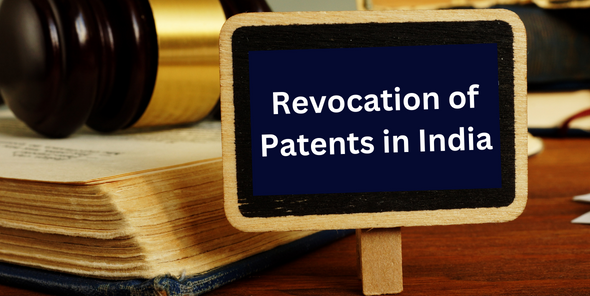Revocation of Patents in India
With the Agreement on Trade-Related Aspects of Intellectual Property Rights (TRIPS) in 2005, Section 25 of the Indian Patents Act, 1970, was amended to include the ability to oppose patents before and after they are granted. It ensures proper appropriation of intellectual property and internationally harmonizes the patent regime.
A person can submit a patent revocation in cases of infringement or claims by licensors. Or if it is deemed against public policy by the Central Government. The exclusive financial rights that come with it aren’t absolute. Therefore, the revocation of a patent can be done at any point during the patent’s lifetime.
Who can file revocation?
Generally, one who makes a counter-claim in a suit for infringement. Or any person (“Person Interested”) with direct, tangible, and commercial interest in the patent. Such an interested person has the right to initiate revocation proceedings. Particularly when such interested persons have been injured or affected by the use of the patent.
Jurisdiction and Multiplicity of Suits
Section 104 states that the person interested can approach only the Intellectual Property Appellate Board or the High Court for revocation. So, the patent owner can not bring the infringement suit before a court inferior to the District Court’s jurisdiction.
Moreover, the Supreme Court laid down what can not be instituted to prevent the wastage of judicial machinery. That includes the post-grant opposition and petitions or counter-claims of revocation against the same patent, which cannot be simultaneously instituted. Frivolous litigation shouldn’t be encouraged as it is viewed as a tool for cash-rich litigants with dishonest interests.
Section 64: Grounds for Revocation
Principally, Section 64 contains inexhaustive grounds that dictate the conditions that warrant the revocation of patents:
1. Invention is obvious and lacks an inventive step or utility.
2. Invention isn’t new and has been publicly used or published in India before the priority date. Or it is foreseen in the light of the knowledge available within any local or native community in India or elsewhere.
3. Either the party wasn’t entitled to the patent, or the subject is not patentable or doesn’t amount to an invention.
4. The scope of patent specifications is incomplete, or the specifications have already been claimed in a patent granted.
5. The Applicant obtained a patent wrongfully in violation of another party’s rights. Such as through incorrect or false representation or leave to modify specifications obtained through fraudulent means.
6. The information disclosed under Section 8 is known to be false by the Applicant, or he has been unable to furnish the required details.
7. Complete specification omits or erroneously attributes geographical origin or biological matter used in the invention.
8. The invention was either secretly used before the date of claim or the Applicant contravened secrecy instructions under Section 35.
9. The complete specification neither describes the invention and method sufficiently nor discloses the best method of performing it known and entitled protection.
Beyond Section 64
Section 65 allows revocation of the patent if it concerns the safety, production, control, use, treatment, or disposal of atomic energy or a radioactive substance governed by the Atomic Energy Act 1962.
Whereas Section 66 deals with a patent that is inherently or has been exercised in a mischievous or prejudicial manner, causing harm to the State and the public.
To prevent a patent from re-validating workable traditional knowledge, the Central Government revoked the patent in the case of Avesthagen Ltd., which had patented “A synergistic ayurvedic/functional food bioactive composition (Cincata) and a process of preparation thereof” that involved Jamun, Lavangpatti, and Chandan to treat diabetes.
Section 85 deals with compulsory licenses of patents that haven’t been worked in India, have not been made affordable for the general public, or lack reasonable requirements within a two-year time frame. If one given such a right isn’t in a position or is unwilling to take advantage of it, it is only fair that someone else is allowed to exploit it.
Conclusion
After allowing the patentee to be heard, the relevant authority may declare that the patent stands revoked in the Official Gazette.
The patent owner must never be under the impression that he can utilize said piece of intellectual property according to his whims and fancies once it has been awarded.
The patents are awarded to forward the greater good in the first place. When new information comes to light, a provision to revoke patents is crucial in protecting intellectual property rights.
[cherry_button text=”Have Questions? Reach Us” url=”https://www.intepat.com/contact-us/” centered=”yes” fluid_position=”right” icon_position=”top” bg_color=”#f79351″ min_width=”33″ target=”_blank”]




